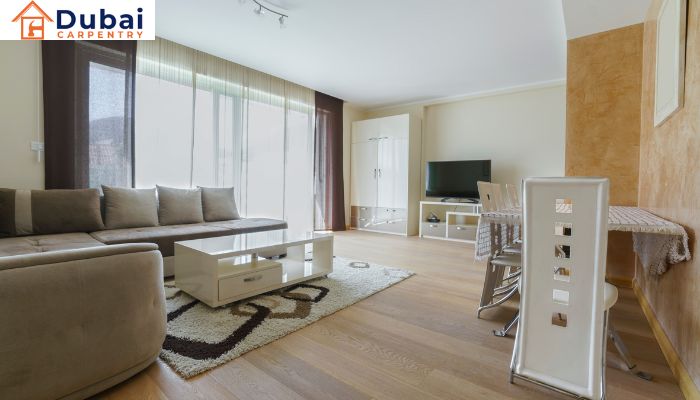This guide to drawing room furniture will help you to elevate your space. The living room is a place where people entertain their guests and unwind at the end of a busy day. It’s also a great spot to create memories. The furniture is at the centre of the space, and it not only provides functionality but plays an important role in setting the mood of the space.
This comprehensive guide will help you create a stylish and inviting space by offering tips and insights on drawing room furniture. It will also help you navigate the selection of furniture and how to arrange it, whether you are looking to redesign your current drawing room or create a brand new one in your home.
Drawing room furniture is important for home décor.
It is impossible to overstate the importance of furniture for drawing rooms in home décor. Drawing rooms, also known as living rooms or lounges, are the heart of the home, where guests and family gather to socialize and relax. The furniture is at the centre of the space, as it plays an important role in defining the aesthetics, functionality and ambience of the space.
Drawing room furniture is important for home décor. Here’s why.
- The furniture in the drawing room sets the mood and style of the entire space. The choice of furnishings, from sofas, chairs, coffee tables, and accents, can help create an overall look and feel that is reflective of your style and taste.
- Draw Room Furniture Creates Spaces for Relaxation, Entertainment, and Socializing: The furniture in the drawing room serves as a practical way to create spaces conducive to relaxation, entertainment, and entertainment. Couches and sofas provide comfortable seats for conversation and lounging, while side and coffee tables are perfect for storing drinks, snacks, and accents. Media consoles and entertainment centres organize the room by storing electronics and media.
- Enhances comfort and hostility: The quality and design of the furniture in a drawing room can significantly impact the comfort and welcome of a house. Soft cushions and cosy throws encourage relaxation, making guests feel at home and welcome. Carefully chosen furniture pieces create a warm and inviting environment. This encourages interaction between people and promotes feelings of belonging and warmth.
- Furniture in the drawing room facilitates interaction between family members, guests, and friends. Comfy seating encourages conversations, sharing of stories and experiences, and deeper relationships. The layout and positioning of furniture are crucial to fostering social interaction and camaraderie, whether you are hosting intimate parties or lively gatherings.
- Adds Personality and Visual Interest: The right furniture for the drawing room will add personality and visual interest to it, making the space feel more inviting. Furniture pieces can be focal points to draw attention, express personality and capture the eye. From accent chairs and sofas that make a statement to coffee tables with striking designs and other decorative items. The combination of textures, colours, and patterns adds dimension and depth to the space, giving it character.
Drawing room furniture is an important part of any home’s decor. It combines style and functionality to create a beautiful and inviting living space. By choosing furniture that reflects your style, personality, and lifestyle, you can transform your drawing room from a drab, uninviting space into an inviting sanctuary.

How to maintain and care for drawing room furniture
It is important to maintain and take care of your drawing room furnishings in order to keep them looking beautiful and functional. These tips will help keep your furniture in good condition.
- Clean regularly: Create a schedule to clean your furniture in the drawing room. This will help you remove dirt and dust. You can use a dry, soft cloth or vacuum with a brush attachment to clean upholstery, metal, and wood.
- Spot cleaning: Remove spills or stains immediately to prevent them from setting in fabrics and damaging surfaces. Use a damp, clean cloth to blot up the stain, and then dry it with a towel. Avoid rubbing the stain, as it can cause further spread.
- Upholstery care: Always follow the manufacturer’s directions for cleaning and caring for upholstery fabric. Avoid harsh chemicals and abrasive cleaning agents that can damage the fabric. Use fabric cleaners designed for each type. Fabric protectors can help to prevent stains from settling in and extend the life span of your upholstery.
- Wooden Furniture Care: To maintain wooden furniture, dust it regularly using a dry and soft cloth. Use a wood polish or cleaner suitable for its type to maintain the natural finish and shine of your wood. Avoid placing wood furniture in direct sunlight to prevent warping or fading.
- Cleaning Metal Furniture: Use a solution of mild soapy water to clean metal furniture. To prevent corrosion or rust, dry the metal surface with a soft towel. Apply a protective polish or wax to maintain the lustre of metal surfaces and protect them from tarnishing.
- Cleaning Glass Furniture: Use a glass cleaning solution or vinegar water to clean glass furniture. This will remove fingerprints, smudges, and other marks. To prevent streaks, dry with a newspaper or lint-free cloth. Use lint-free cloths and avoid scouring pads or other abrasive products that can scratch glass.
- Protective Measures: Placemats, tablecloths, and coasters can protect the furniture’s surface from heat, scratches, and spills. To prevent damage and scratches to your floors, place felt pads under the furniture’s legs. Use furniture throws or covers to protect your upholstery against pet hair and stains.
- Don’t Overload: Avoid overloading shelves, drawers, or cabinets with excess weight. This can damage the structural integrity of furniture. To prevent accidents, and to prolong the life and durability of your furniture, follow the weight and storage limits provided by the manufacturers.

Explore Different Types Of Drawing Room Furniture
It’s essential to think about a range of different furniture styles when furnishing your living room to ensure that it is both functional and cohesive. The following are some of the most important types of furniture for your drawing room:
Sofas and sectionals
Sofas are versatile seating choices available in a variety of styles, sizes and materials.
Sectionals are modular seating arrangements with a large seating capacity and flexibility, perfect for open-plan rooms or large drawing rooms.
You can find coffee tables and side tables in a variety of styles.
- Coffee tables: These central pieces provide surfaces to hold drinks, snacks, and other decor items. They come in many shapes and sizes.
- Side tables: Placed next to seating, these smaller tables can be used to store books, lamps and other personal items. They are a great way to add style and functionality.
Accent chairs and recliners
- Accent chairs: These stylish seating options add visual interest and personality to your drawing room. They are available in a variety of designs, colours, and fabrics.
- Media Consoles: The recliner is a comfortable chair with adjustable footrests and backrests. It’s perfect for relaxing and unwinding after a hard day.
Media consoles, entertainment centres and other media devices:
- Entertainment centers: Units designed for storing televisions, gaming consoles and media players. Often include shelves, drawers and cabinets to organize media and electronic accessories.
- Media Consoles: These compact units provide space to store and display media items and décor. They are available in many styles and finishes that complement your drawing room.
Bookcases and display cabinets:
- Bookshelves: Bookcases are vertical storage units for organizing books, magazines, and decorative items. They are available in wall-mounted or freestanding designs.
- Display cabinets: Cabinets with glass fronts display collectables, art, and family heirlooms and provide hidden storage for items.
Ottomans, Poufs and Poufs
- Ottomans: Ottomans are versatile pieces which can be used as extra seating or coffee tables when they’re topped with a tray. They come in a variety of sizes and shapes.
- Poufs: Poufs are soft, cushioned chairs that can be used for casual seating and informal gatherings.
The following are some examples of floor coverings, including rugs and carpets.
- Area Rugs: These large rugs define seating arrangements and anchor them with furniture. They are available in different materials, colours, and patterns to match any decor style.
- Floor cushions: These low seating options add flexibility and comfort to your drawing room. They are ideal for informal lounging or additional seating at gatherings.
Conclusion:
The care and maintenance required for drawing room furniture is essential in order to maintain its functionality and appearance. You can maintain the appearance of your furniture for many years by following a routine cleaning schedule, dealing with spills promptly and using suitable cleaning products.
Read More: The Ultimate Guide to Office Furniture







